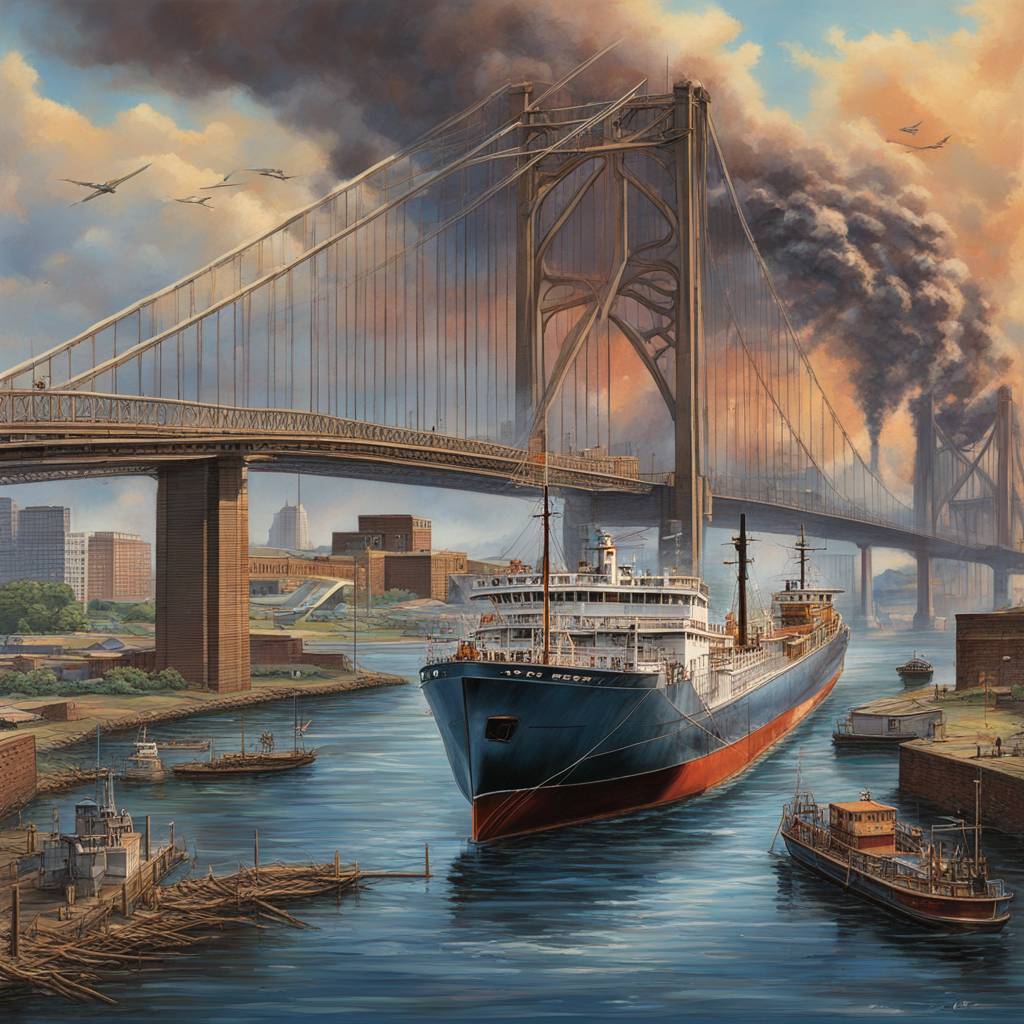The Francis Scott Key Bridge in Baltimore was hit by a cargo ship named the Blue Nagoya in 1980, damaging some protective concrete but not toppling the structure. In 2022, a cargo ship called the Dali struck the bridge, causing it to collapse. The Dali was larger and heavier than the Blue Nagoya, which experts believe contributed to the destruction of the bridge. The Dali was moving at just under seven knots when it crashed into the bridge, emphasizing the increased danger that larger cargo vessels pose to bridges.
Structural engineers have noted that the Key Bridge did not have protective barriers in place to prevent or redirect a ship from crashing into its piers. Impact protection devices have become common in the industry since the 1980 collapse of the Sunshine Skyway Bridge in Florida, which killed 35 people. The Key Bridge, which opened in 1977, did not have these protective measures in place. The accident has prompted discussions on how to better protect bridge support structures from similar incidents involving larger and heavier cargo vessels.
The National Transportation Safety Board is still investigating the cause of the Key Bridge collapse, and a full report may take years to complete. Experts agree that no bridge would have been able to withstand the direct impact of a cargo ship weighing 95,000 tons, such as the Dali. The increased size and weight of modern cargo vessels pose a significant threat to bridges, as evidenced by the destruction caused by the Dali. Structural engineers are working to understand how to better protect bridges from potential collisions with large ships in the future.
Amar Khennane, a researcher at the University of New South Wales, pointed out that the Dali was significantly larger and heavier than the Blue Nagoya, making it more dangerous to bridge structures. Vessels weighing up to 100,000 tons can have a catastrophic impact on piers if not properly protected. Raffaele De Risi, a civil engineer at the University of Bristol, emphasized the importance of implementing protective measures against impact to prevent similar incidents from occurring in the future.
Benjamin W. Schafer, a professor at Johns Hopkins University, highlighted the drastic increase in size and weight of ships since the 1970s when the Key Bridge was built. He emphasized the need to learn lessons from the Dali incident to better protect bridge support structures from shipping traffic. The incident has raised concerns about the safety of bridges in the face of larger and heavier cargo vessels, prompting discussions on how to improve protective measures to prevent similar accidents in the future.








